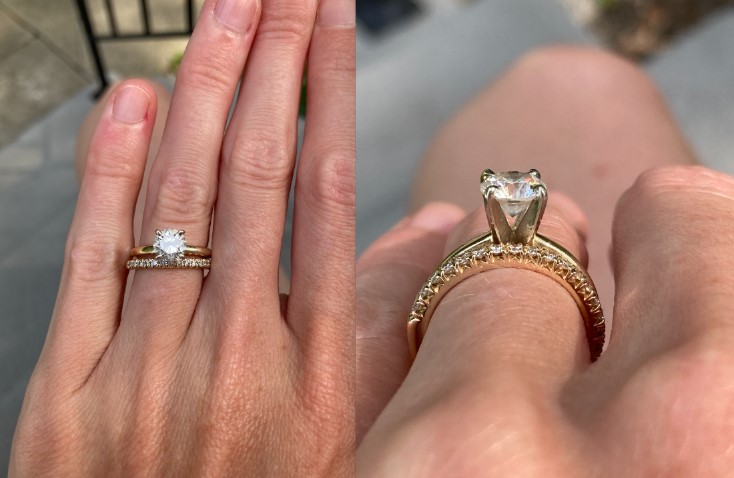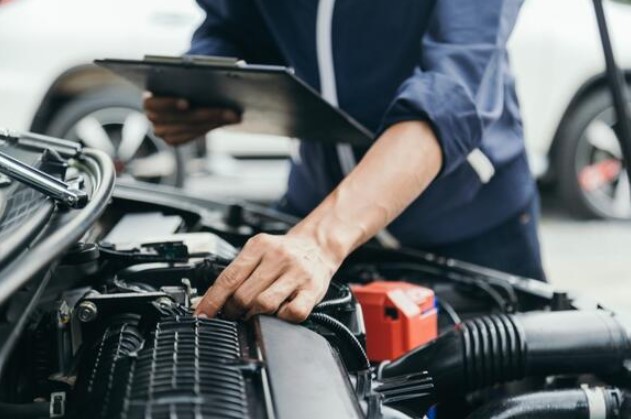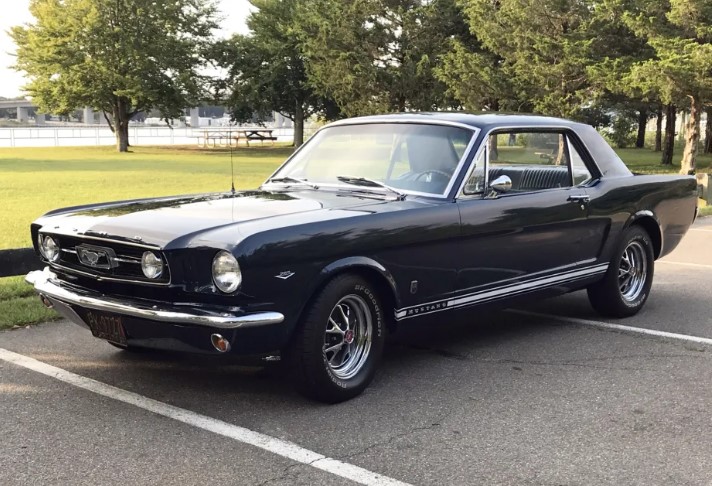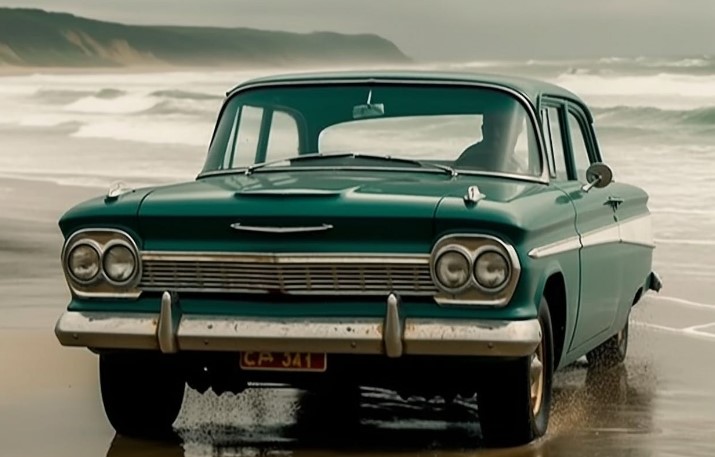

(Photo: digital.hagley.org)
In Part 1 of this article, the early life and career of Edward G. Budd was profiled. How Budd revolutionized the automobile industry between 1900-1920 was also covered.
In Part 2 of the article, a number of other examples of the Budd Manufacturing Company’s impact on the automotive industry were provided.
In Part 3, an overview of Edward G. Budd and his company’s later impact on the railroad industry is provided, as well as his legacies.

Stainless steel
Early in the 20th century, Harry Brearly, a British metallurgist, developed what is now known as stainless steel by mixing a small amount of nickel into regular steel, which created a rust-free product. Brearly’s stainless steel was not usable in the metal stamping industry; however, after World War I German steel manufacturer Krupp developed a product that could be used by the industry. It was licensed in the U.S. by Allegheny Steel Co. and Budd became interested in it soon thereafter.
The Great Depression had a significant and negative impact on Budd’s auto-body business. Simply put, people were purchasing far fewer cars and trucks, so fewer Budd all-steel bodies and wheels were needed. However, Budd said the Depression gave him “time to think” about potential new steel markets.

Budd returned to the U.S. following a trip to Europe in 1930. He had a very novel idea. He had built all-steel railcars early in his career; he now sought to manufacture all-steel railcars and then use an “outer skin” made from stainless steel.
Budd began developing his idea to use a lightweight alloy that was slightly different from the Krupp/Allegheny Steel product. He believed his “18 and 8” – a type of low-carbon steel with 18{7b5a5d0e414f5ae9befbbfe0565391237b22ed5a572478ce6579290fab1e7f91} chrome and 8{7b5a5d0e414f5ae9befbbfe0565391237b22ed5a572478ce6579290fab1e7f91} nickel – could be used to build trains. Stainless steel was practical and attractive – strong, light, malleable, and, ideally for trains, it did not rust.
Allegheny Steel and Budd Manufacturing worked together; the companies learned that stainless steel had “sufficient elasticity to permit formation by shallow-draw dies and presses.” However, conventional welding techniques destroyed the material.

In 1932, Earl J.W. Ragsdale, Budd’s brilliant development engineer, was tasked to develop a welding process that did not destroy stainless steel. Ragsdale found the answer after several months of work. By modifying existing arc-welding equipment to work at a temperature of 2,700 degrees, stainless steel panels could be fused together without damage.
With Ragsdale’s work, Budd developed and patented the “shot-welding” process; a new method that allowed stainless steel to be fabricated. While ordinary electric welding destroyed the strength and rust-resistant qualities of stainless steel, shot-welding preserved those qualities. British and German researchers had developed stainless steel, but with shot-welding Budd began what one writer called “the modern age of metal fabrication, and snatched the lead in developing what would become one of the most prized ‘miracle metals.’”
Michelin commissioned a single-car, rubber-tired, stainless steel-paneled train later in 1932 and ordered another three over the following months. Named the Budd-Michelin “Lafayette,” these new railcars paved the way for Budd’s renewed work for the railroad industry.

The Burlington Railway’s Zephyr
Ralph Budd (no relation to Edward G. Budd), was appointed president of the Chicago, Burlington & Quincy Railroad (CB&Q) in 1931. He thought that stainless steel might improve traffic on his railroad during the Depression. After taking a demonstration ride through Philadelphia on a Budd-produced stainless steel gas-electric railcar, Ralph Budd was convinced. He commissioned the Budd Company to build a train that would revolutionize the industry.
In 1934, the Budd Manufacturing Company made history with the nation’s first stainless steel streamliner for the CB&Q. Named by the railroad the Burlington Pioneer Zephyr, its stainless steel fluted skirt structure was manufactured using Budd’s proprietary shot-welding process.

Equipped with a diesel-electric drivetrain manufactured by General Motors, the three-car Zephyr weighed less than a single Pullman railcar. Its shape was streamlined for both aesthetic reasons and speed; its unique shape reduced air resistance. The three-car streamliner’s weight and aerodynamic shape improved fuel economy and enabled it to travel faster than any train had traveled before.
The Zephyr’s interior was also very different. Each car had air conditioning, soft lighting and cushioned seats that replaced traditional red-plush chairs that had been so uncomfortable on hot days. The train’s interior was designed by Philadelphia architect Paul Cret.
Budd’s landmark train was the most significant to roll on American rails in a generation; it changed the way railroads and passengers viewed passenger trains and diesel engines. A streamliner craze was launched by the Zephyr.

Within two years, hundreds of streamlined cars and locomotives were being manufactured by Budd. Names like Rocket, Silver Meteor, Champion, Mark Twain, Flying Yankee, Super Chief and El Capitan were soon riding the nation’s rails.
Moreover, a Budd streamliner’s significantly higher speeds led to Budd’s interest in disc brakes, which were first applied to the streamliners in the late 1930s.
Ed Budd’s streamliner trains rejuvenated the passenger rail industry in the 1930s, and Budd stainless steel railcars were very successful for many years.

Edward G. Budd passes
At nearly 76 years old, Edward G. Budd died on November 30, 1946. He was succeeded as the company’s president by his son, Edward G. Budd, Jr. At that time, the company’s two American subsidiaries – the Budd Wheel Co. and Edward G. Budd Mfg. Co. – were merged into a single entity, the Budd Co.

The company continues
Following the end of World War II, the Budd Company returned to automobile body manufacturing. The company helped Hudson to develop the 1948 Hudson Commodore, another evolutionary vehicle that was built using integral frame and chassis. Hudson spent $16 million to re-tool its facilities for the vehicle;, unlike most of the other pre-war unibodied cars built by Budd, the Hudson Commodore was successful. Hudson advertised that the car’s wide footprint, low center of gravity, 15-inch tires and “monobilt” construction contributed to the Commodore’s excellent handling.
Budd also built the bodies for the 1947 Studebaker, which was another memorable postwar automobile (although it had a normal body on frame design).

Allegheny Ludlum. Only six were produced. (Photo: silodrome.com)
Business continued to be good with Ford after the war. In 1950 a new automotive stamping plant was built southeast of Detroit in Gary, Indiana. An addition to Budd’s Hunting Park, Pennsylvania production facility was completed in 1952, and by the end of the 1950s a new facility was built in downtown Detroit.
Although the bulk of the company’s automotive business consisted of supplying stamping and sub-assemblies, Budd also supplied bodies for special projects such as Ford’s 1955-57 Thunderbird that were built at Budd’s Detroit facility and then trucked for painting and final assembly at Ford’s Dearborn facility.

Disc brakes and truck trailers
Based on the company’s prowess with disc brakes on railcars, automotive disc brakes manufactured by Budd were used for the first time on the 1967 Chrysler Imperial.
Budd also built truck trailers made of aluminum or stainless steel. The Budd Trailer was first manufactured in the 1960s. The company’s truck trailers were popular for about 20 years, but manufacturing ended in the early 1980s.

Death of Edward Budd, Jr.
Edward Budd, Jr. led the company from his father’s death in 1946 until he retired as chairman of the board in 1967, ending the family’s 55-year management of the company founded by Edward G. Budd in 1912. Edward Budd, Jr. died in 1971.
A significant legacy in two industries
The rail and automotive industries have been competitors almost since the first automobile was built. But manufacturer Edward G. Budd contributed to the progress of both industries during the first half of the century.
To most of those in the trucking industry today, the word “Budd” brings to mind the 10-hole, stud-piloted disc wheel found on medium- to heavy-duty trucks. Older people may remember the thousands of stainless steel railcars that once crossed the country. Very few will recognize the company as the world’s largest and oldest independent producer of automobile bodies.

Deep-draw metal stamping was only a theory when Budd started producing automobile bodies in 1912. Due to pioneering work by the company’s engineers and breakthroughs in sheet steel composition, by 1930 it was a reality. Using huge multi-story metal presses that weighed between 200 and 1,000 tons, a piece of metal could be shaped into a car’s major body parts.
As noted by his biographers, Edward Budd and the Budd Manufacturing Company deserve most of the “direct credit for making the welded all-metal body a standard element of automotive production and design to this day.”
Edward Budd’s advances in manufacturing techniques made the mass creation of durable car bodies possible. He also transformed the passenger and commuter trains of the world. Neither mode of transportation was ever the same again.

He and his company were also instrumental in the development of the radial disk brake and the automatic wheel line.
Edward Budd’s achievements improved automobiles, trucks, railroads and airlines. Many of his transportation achievements were a product of his experiments with ever-lighter materials, led by aluminum and stainless steel. One thing not touched on earlier was that Budd built a seaplane made entirely from stainless steel that flew successfully in 1930.
Yet in the 1930s, neither the automobile nor the airplane had begun to supplant the passenger train. Following up on his McKeen railcar, Budd partnered with Michelin to design a railcar that ran on rubber tires, which several American railroads tested. The high-chromium nickel-alloy steel formed using shot-well welding did not need grinding. Budd’s gleaming metal was corrosion-free and required no paint.

Edward Budd’s pioneering advances in manufacturing techniques transformed the passenger and commuter trains of the world – first in the early 1900s and then again in the 1930s. He began and ended his career by making contributions to the railroad industry. Beginning as a machinist apprentice in 1887 in Philadelphia, he later helped build the Pennsylvania Railroad’s first steel passenger car. He was using steel and stainless steel in the early 1930s to create an innovative train that revived the passenger rail industry.
Budd’s Pioneer Zephyr was the first of many streamlined passenger trains. The original train is on permanent display at Chicago’s Museum of Science and Industry. The designs that he and his company developed led to “distinctive industrial design in everything from automobiles to irons.”

Recognition
In 1944 Edward Budd received the American Society of Mechanical Engineers’ highest award for “outstanding engineering achievements.”
Nearly 40 years after his death, Edward G. Budd, the “father of the stainless-steel streamliner,” was inducted into the Automotive Hall of Fame.
In 2015, nearly 70 years after his death, Edward G Budd was inducted into the National Railroad Hall of Fame.
The company’s fate
The Budd Company was acquired by Thyssen AG of Germany in 1978. It exited the company’s non-automotive businesses while focusing on the core automotive businesses. In 1999 Thyssen AG and Krupp AG merged, becoming ThyssenKrupp Automotive AG, one of the largest automotive suppliers in the world.

ThyssenKrupp AG’s Budd subsidiary operates nearly 40 facilities in North America, employing about 13,000 people. The company designs and manufactures products using a variety of materials that includes several grades of steel, sheet molded composites, aluminum, graphite, ductile and gray iron. Its products are found on more than 100 current model vehicles sold in North America.

The Budd rail businesses, which evolved to focus primarily on commuter rail transit, were acquired by Bombardier Corporation of Canada. As of January 29, 2021, Alstom completed the acquisition of Bombardier Transportation. Alstom is headquartered in France. Its product portfolio “ranges from high-speed trains, metros, monorail, trams and e-buses to integrated systems, customized services, infrastructure, signaling and digital mobility solutions.”
So although the Budd Company no longer exists, the company’s work is being carried on by companies that are among the leaders in their industries.







More Stories
Tips for Negotiating the Best Deal When Selling Your Car
5 Women That Shaped the Automobile and the World Around It (and Us)
Automobile retail sales see double-digit growth in February on robust demand